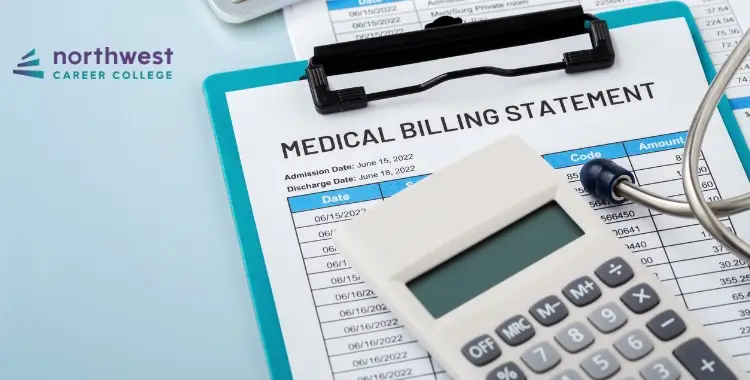Essential KPIs in Medical Billing: What to Monitor for Success
- Medical Billing and Coding
- July 16, 2024
- 1.9k views
- 4 min read

In a medical billing and coding job, key performance indicators (KPIs) are important for improving efficiency, accuracy, and financial viability. KPIs provide insight into areas where performance may be lacking in billing processes, helping to identify areas for improvement and optimize revenue cycles in healthcare. Tracking these crucial KPIs in medical billing can lead to more efficient and profitable practice management.
Table of Contents
Average Days in Accounts Receivable (AR)
Days in accounts receivable (AR) is the average number of days a practice must wait to collect their debts. This is one of the critical KPIs since it represents your efficiency in billing and collection processes.
A lower number will show how fast, on average, your practice can convert services provided into cash. Maintaining good cash flow is critical to the financial health of the practice. This can be improved by focusing on timely claim submission, efficient follow-up of unsettled claims, and accurate patient billing.
Clean Claim Rate
CCR measures the percentage of claims accepted and processed for payment without errors at the start of their submission; high clean claim rates are supposed to reduce payment delays and minimize rework.
Claim inaccuracies may cause them to be rejected or denied, which is a massive hit on your revenue cycle. Have a well-trained billing team with an advanced billing software investment to trap those errors before they are submitted.
Denial Rate
The Denial Rate provides the percentage of claims denied by the payers. A high denial rate could be a red flag against your billing process because it contains incomplete/mislaid/ incorrect coding or missing information, or the authorization is unavailable.
You should track the denied claim regularly to analyze common reasons for denial. Once you regularly analyze this data, you can effectively implement corrective measures and drive down your practice’s denial rate. By preventing denials before they happen, you can reduce friction and delays in the revenue cycle and ensure faster payments.
Net Collection Rate
The NCR measures the percentage of revenue collected from total allowed charges after adjustments. This KPI clearly shows how much of the earned revenue your practice collects. A high NCR means its billing and collection practices are highly efficient, while a low NCR could indicate problems such as uncollected patient balances or claims not paid out by payers. Therefore, for better NCRs, patient follow-ups, claim resubmissions, and effective debt recovery strategies are areas to take care of.
First Pass Resolution Rate
First-pass resolution Rate (FPR) is the percentage of claims processed and paid on the first submission, with no need for additional follow-up or resubmission. A high FPR indicates a very smooth, well-functioning billing process. To achieve a high FPR, one has to ensure that claims are correctly submitted and that proper coding with verification regarding patient information is done before submitting claims.
Charge Capture Accuracy
Charge Capture Accuracy is the percentage of accuracy of charges entered into a billing system for services rendered. Inaccurate charge capture can result in lost revenue and compliance issues. Regular auditing and comprehensive training of your billing staff can help enhance charge capture accuracy, ensuring all billable services are appropriately documented and billed.
Patient Payment Collection Rate
The Patient Payment Collection Rate refers to how well your practice collects payments directly from the patient. Improve this KPI by openly communicating with staff and patients regarding what can be expected of them financially. If possible, offer multiple payment options with enhanced upfront collection practices or detailed billing statements mailed to patients.
Conclusion
Tracking key performance indicators in house medical billing may help optimize one’s revenue cycle for their practice’s good financial health. Tracking trends include Days in Accounts Receivable, Clean Claim Rate, Denial Rate, Net Collection Rate, First Pass Resolution Rate, Charge Capture Accuracy, and Patient Payment Collection Rate. Effective KPI tracking improves cash flow and all parameters that lead to operational efficiency and patient satisfaction.
Are you planning to be in the medical billing and coding profession? Learn more about Northwest College Career’s Medical Billing and Coding Program, and begin your challenging career in healthcare administration today.





